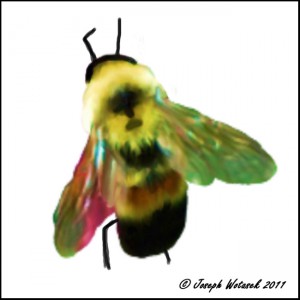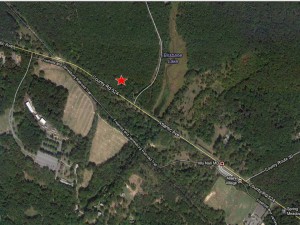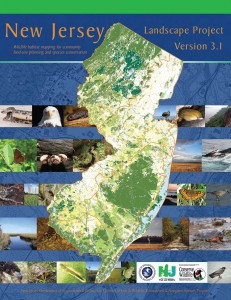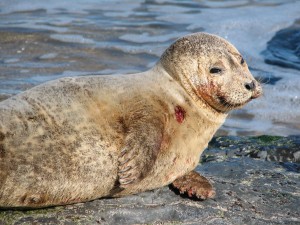New Jersey’s Endangered Species List Continues to Grow
NEW JERSEY’S STATUS REVIEW OF TERRESTRIAL MAMMALS HAS BEEN COMPLETED
By Michael Davenport, Marine Species & GIS Programs Manager
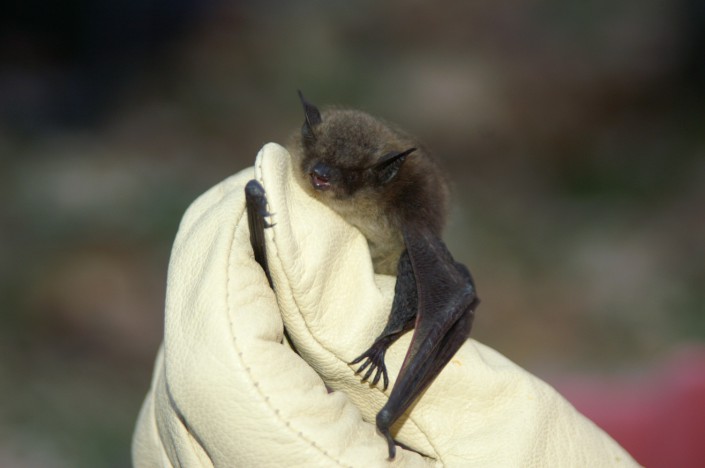
The state’s Endangered and Nongame Species Program (ENSP) has recently completed a status review of the state’s terrestrial mammal species. As a result of this review, an additional four species (all bats) have been recommended for listing as Endangered in New Jersey (eastern small-footed myotis, little brown bat, northern myotis, and tricolored bat). An additional four bat species (big brown bat, hoary bat, red bat, and silver-haired bat) and a rodent (the meadow jumping mouse) have been recommended for listing as Special Concern. These additional listings are largely due to the impact of White-nose Syndrome, especially on cave-dwelling bats. However, additional increasing threats, such as wind turbines, were also factors.
Although these status changes have been recommended, it may take several more months or even years before the changes to the lists are made official through a formal rule-making process. The most recent status review for birds, for instance, was completed in 2005 but it wasn’t until 2012 that the status changes decided upon within that status review went into effect.
The process for determining a species’ state status is known as the “Delphi” method of species status review and it is a process which Conserve Wildlife Foundation of NJ (CWF) staff assists the state with.
The ENSP endeavors to complete a review of all species currently included on the Endangered and Nongame lists every 5-10 years. In addition, other species groups not currently included on those lists may be reviewed for status as well. At any given time, there may be several status reviews being conducted.
The first step taken in conducting a status review is to identify experts and invite them to participate as a member of a review panel. Members of the panel may be comprised of experts within academia, government agencies, non-profits, or private consultants as well as others.
Once a sufficient number of experts have agreed to participate, staff within the ENSP and CWF will compile background material for the species being reviewed. This may include reports, survey data, and data contained within the state’s Biotics database which is the electronic warehouse for all imperiled species data in New Jersey. This background data, as well as a list of the species being reviewed, and definitions of the status options, are then sent to the panelists for Round 1 of the review.
Delphi reviews are comprised of multiple “Rounds”. For each round, each panelist will choose a status for each species based upon that panelist’s expertise as well as the background material. The panelist then sends their selections and justification regarding each species to ENSP or CWF staff who compile the results submitted by all panelists. The review is completed anonymously, so the panelists do not know the identities of the other participants.
For each species, the panel must reach consensus of at 85% of the respondents for a species’ status to be determined. If consensus is not reached during the first round, that species will move on to be reviewed in Round 2. For each new round, the panelists’ status choices during the prior round, as well as all the comments made, are available to the panel, so that reviewers can consider the weight of evidence and other reviewers’ opinions on status as they prepare to vote again. This continues until consensus is reached for all species under review.
Once consensus is reached for all species or, if after four rounds have passed and consensus could not be reached for some species, ENSP or CWF staff take the compiled Delphi results to the Endangered and Nongame Species Advisory Committee (ENSAC). ENSAC reviews the results and makes the final recommendations on status for those species for which consensus was not reached by the expert panel. Based upon ENSAC’s recommendations, any changes to the Endangered and Nongame lists must go through a formal rule-making process before those changes can be made official.
The Delphi review process is a science-based, anonymous review by those with the most expertise on the species within New Jersey. A great deal of thought and time go into preparing for and carrying out a review and CWF has played a major role in assisting with the process. From the blue whale to fairy shrimp, each species will ultimately receive a state status, leading the way for conservation action.




